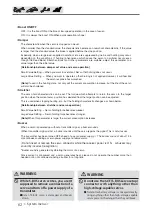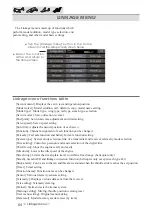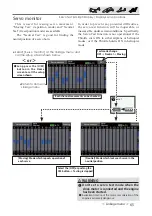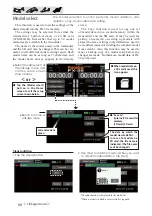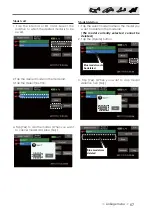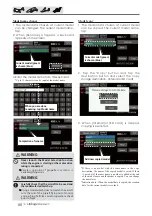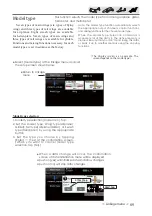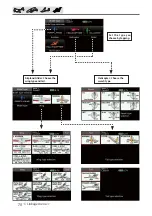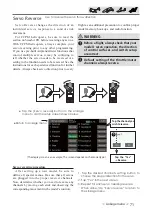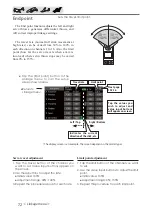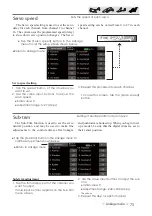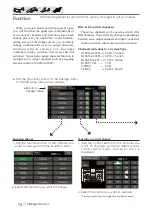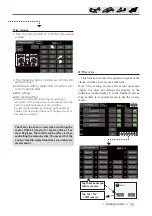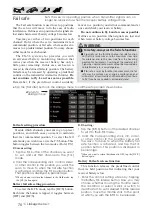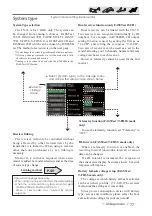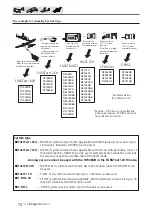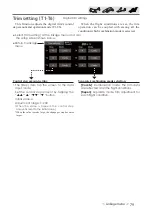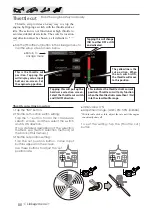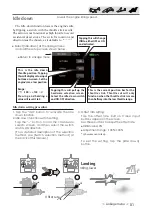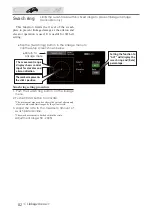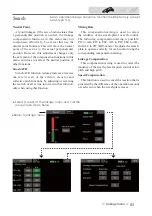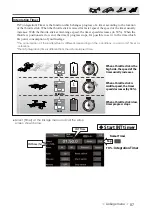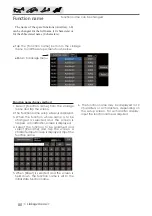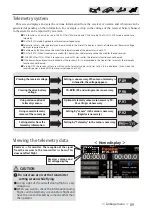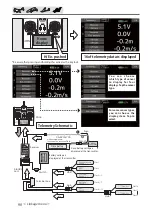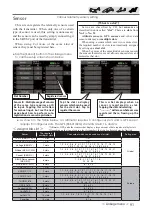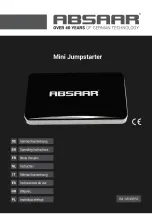
76
< Linkage menu >
ŏ
Tap the [Fail safe] button in the Linkage menu to call the setup screen shown below.
Fail safe
Sets the servos
operating position when transmitter signals can no
longer be received or when the receiver battery voltage drops.
The Fail safe function is used to set up positions
that the servos will move to in the case of radio
interference. De
¿
nes servo position when signals are
lost and when receiver battery voltage becomes low.
You may set either of two positions for each
channel: Hold, where the servo maintains its last
commanded position, or fail safe, where each servo
moves to a predetermined position. You may choose
either mode for each channel.
The FX-36 system also provides you with
an advanced battery monitoring function that
warns you when the receiver battery has only a
little power remaining. In this case, each servo is
moved to the de
¿
ned failsafe position. The battery
failsafe may be released by operating a prede
¿
ned
control on the transmitter (default is throttle).
Do
not continue to fly. Land as soon as possible.
Remember, if the predefined control suddenly
Fail safe setting procedure
Decide which channels you want to go to preset
positions, and which ones you want to maintain
their last commanded position. To select the fail
safe mode you wish to set, use the F/S button. This
button toggles between the two modes. (Hold, F/S)
F/S mode setting:
1. Tap the F/S button of the channel you want
to set, and set that channel to the [F/S]
mode.
2. Hold the corresponding stick, control, slider,
or other control in the position you want the
servo to move to when the fail safe function
is activated, and tap the F/S position button.
That position is displayed in percentage.
*When you want to return that channel to the Hold mode, tap
the [F/S] button again.
Battery fail safe setting procedure
To select the B.F/S mode, tap the [B.F/S] button.
Each time the button is tapped, it toggles between
[OFF] and [B.F/S].
moves to a position you did not command, land at
once and check your receiver battery.
Do not continue to
À
y. Land as soon as possible.
Defines servo position when signals are lost and
when receiver battery voltage becomes low.
WARNING
For safety, always set the fail safe functions.
■ Especially set the throttle channel fail safe function
so that the servo moves to the maximum slow side
for airplanes and to the slow side from the hovering
position for helicopters. Crashing of the model at full
high when normal radio waves cannot be received due
to interference, etc., is very dangerous.
■ If fail safe is reset by throttle stick movement, the fail
safe may be mistaken as an engine malfunction and
will be reset at low throttle and the model will continue
to fly. If you have any doubts, immediately land.
B.F/S setting:
1. Tap the [B.F/S] button of the desired channel
to set it to the B.F/S mode.
2. Hold the corresponding stick, VR, slider,
or other control in the position you want
the servo to move to when the battery fail
safe function is activated, and tap the F/S
position button. This position is displayed in
percentage.
*When you want to return that channel to OFF, tap the [B.F/S]
button again.
Battery Fail safe release function
This function releases the predefined control
from its held position after indicating that your
receiver battery is low.
1. Enter the control setting screen by tapping
the Battery F/S release button. Now, you may
choose whether moving the throttle resets
the condition, or select a stick or switch to
deactivate it. To set a desired throttle release
position, move the throttle stick to the point
at which you wish the B.F/S to be released.
ŏ
Return to
Linkage menu

